- Why is Autumn Pruning Important for Ornamental Shrubs?
- When is the Best Time to Prune Ornamental Shrubs in Autumn?
- General Timing
- Specific Guidelines
- Tools and Techniques
- Conclusion
- How to Properly Prune Ornamental Shrubs in Autumn?
- Tools and Equipment for Autumn Pruning of Ornamental Shrubs
- 1. Pruning Shears
- 2. Loppers
- 3. Hedge Trimmers
- 4. Hand Saw
- 5. Gloves
- 6. Safety Gear
- 7. Disinfectant Spray
- Preparing Your Ornamental Shrubs for Autumn Pruning
- Step-by-Step Guide to Pruning Ornamental Shrubs in Autumn
- Tips and Techniques for Maintaining Pruned Ornamental Shrubs in Autumn
- 1. Clean up the pruned branches:
- 2. Apply a layer of mulch:
- 3. Water the shrubs:
- 4. Consider fertilizing:
- 5. Monitor for pests and diseases:
- 6. Prune selectively, if necessary:
- 7. Protect the shrubs from extreme weather:
- Common Mistakes to Avoid During Autumn Pruning of Ornamental Shrubs
- Questions and Answers:
- When is the best time to prune ornamental shrubs in autumn?
- What are the benefits of pruning ornamental shrubs in autumn?
- Can I prune my ornamental shrubs in late autumn?
- How much should I prune my ornamental shrubs?
- What tools do I need for pruning ornamental shrubs in autumn?
- Can I prune flowering shrubs in autumn?
- Should I fertilize my shrubs after pruning them in autumn?
- Videos: How to Prune Lilacs
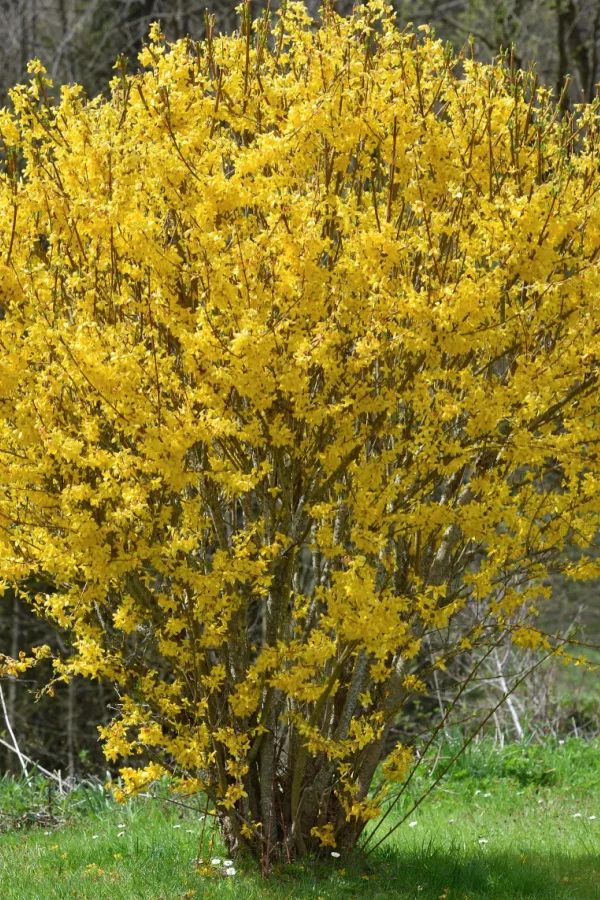
Fall is the perfect time to prune your ornamental shrubs, ensuring they remain healthy and beautiful throughout the year. Pruning plays a crucial role in maintaining the shape, size, and overall health of your shrubs. By removing dead or damaged branches and promoting proper air circulation, you can help prevent diseases and pests from infesting your plants.
Before you start pruning, it’s important to understand the specific needs of each type of ornamental shrub. Different shrubs have different growth habits, and knowing whether they bloom on old or new wood will guide your pruning decisions. Some shrubs, such as hydrangeas, bloom on old wood, meaning they set their flower buds during the previous year. Pruning them in early fall or late winter could result in a loss of blooms.
When pruning your shrubs, always use clean, sharp tools to make clean cuts. This reduces the risk of introducing diseases to your plants. Start by removing any dead or broken branches, cutting them all the way back to the main stem or trunk. Then, take a step back and evaluate the shape and overall structure of the shrub. Trim back any branches that are crossing or rubbing against each other, as these can create wounds and hinder the plant’s growth.
Remember to always prune conservatively, as overpruning can weaken the shrub and leave it vulnerable to diseases and harsh weather conditions. By following proper pruning techniques and understanding the specific needs of your ornamental shrubs, you can ensure they thrive and bring beauty to your garden year after year.
Why is Autumn Pruning Important for Ornamental Shrubs?
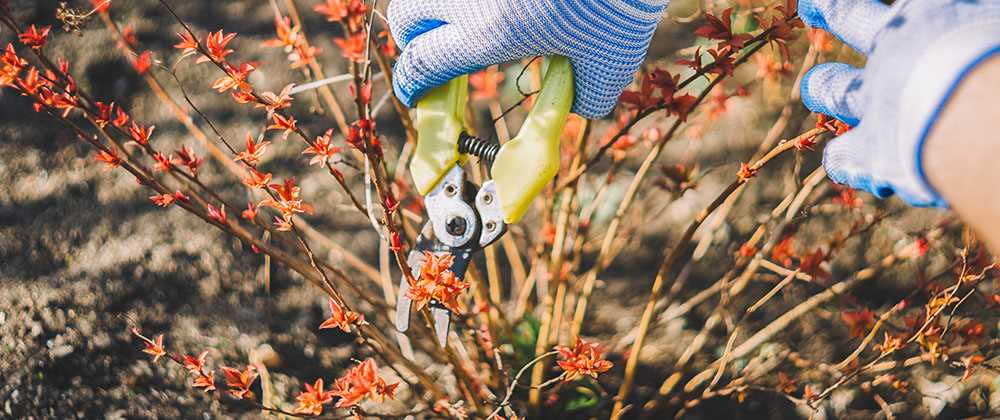
Autumn pruning plays a crucial role in maintaining the health and appearance of ornamental shrubs. It is a necessary step in their care and maintenance routine for several reasons:
Promotes Growth: Pruning in autumn stimulates new growth by removing dead or damaged branches. By getting rid of these unhealthy parts, the shrub can focus its energy on producing new, healthy branches come springtime.
Controls Size and Shape: Regular pruning in autumn helps control the size and shape of ornamental shrubs. By selectively cutting back branches, you can prevent them from becoming overgrown and maintain a neat and compact appearance.
Enhances Flowering: Many ornamental shrubs bloom in spring or summer. By pruning them in autumn, you can remove any spent flowers or branches, making way for new growth and ensuring a more abundant and vibrant display when flowering season arrives.
Improves Air Circulation: Proper pruning in autumn allows for better air circulation within the shrub’s canopy. This reduces the risk of fungal diseases and promotes overall plant health by preventing the buildup of harmful moisture that can lead to rot or other problems.
Removes Pests and Diseases: Autumn pruning gives you the opportunity to identify and remove any signs of pests or diseases that may be affecting your ornamental shrubs. By removing infected branches or foliage, you can help prevent the spread of these issues and keep your plants healthy.
Overall, autumn pruning is an essential step in the care and maintenance of ornamental shrubs. It promotes growth, controls size and shape, enhances flowering, improves air circulation, and helps prevent pest and disease issues. By taking the time to prune your shrubs in the autumn, you can ensure their health and beauty for years to come.
When is the Best Time to Prune Ornamental Shrubs in Autumn?
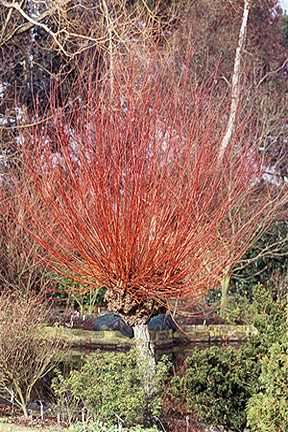
Pruning is an essential part of maintaining the health and appearance of ornamental shrubs. Knowing the right time to prune can make a big difference in the success of your pruning efforts. In autumn, there are specific guidelines to follow when it comes to pruning ornamental shrubs.
General Timing
The best time to prune ornamental shrubs in autumn is after they have finished blooming. This timing allows the shrub to focus its energy on developing new buds for the following growing season. It is important to avoid pruning too early in autumn, as this can stimulate new growth that may be damaged by frost.
Specific Guidelines

When pruning in autumn, there are a few specific guidelines to keep in mind. First, make sure to remove any dead or diseased wood, as well as any crossing or rubbing branches. This helps improve airflow and reduces the risk of disease and pest infestations.
It is also important to avoid pruning shrubs that are typically pruned in spring, such as those that bloom on old wood. Pruning these shrubs in autumn can remove the buds that would produce flowers in the following season.
Tools and Techniques
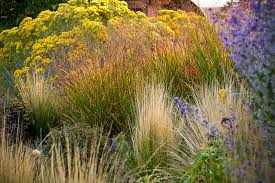
When pruning ornamental shrubs in autumn, it is important to use the right tools and techniques. Use sharp and clean pruning shears or loppers to make clean cuts. Avoid tearing or ripping the branches, as this can lead to improper healing and potential disease entry points.
When making a cut, always prune just above a bud or lateral branch. This encourages new growth and helps maintain a desired shape for the shrub. Additionally, be mindful of the overall shape of the shrub and prune accordingly to maintain a balanced and aesthetically pleasing appearance.
Conclusion
Pruning ornamental shrubs in autumn is an important part of their care and maintenance. By following the right timing, guidelines, and techniques, you can help promote the health and beauty of your shrubs. Remember to always research specific care requirements for each type of shrub, as some may have unique pruning needs.
How to Properly Prune Ornamental Shrubs in Autumn?
Pruning ornamental shrubs in autumn is an important part of their care and maintenance. It helps to promote healthy growth, maintain their shape, and improve their overall appearance. Here are some essential steps to follow when pruning ornamental shrubs in autumn:
Select the right tools: Before you start pruning, make sure you have the right tools, such as sharp pruning shears, loppers, and a pruning saw. Clean and sharpen the tools to ensure clean cuts and prevent the spread of diseases.
Identify the branches to prune: Take a close look at the shrub and identify any dead, damaged, or diseased branches. These should be removed first to prevent the spread of diseases and improve the shrub’s overall health.
Remove crossed or rubbing branches: Look for any branches that are crossing or rubbing against each other. These branches can cause damage and should be pruned to allow for better air circulation and prevent the spread of diseases.
Prune for shape and size: If you want to maintain a specific shape or size for your shrub, selectively prune the branches accordingly. Make cuts just above a bud or a side branch to encourage new growth in the desired direction.
Prune lightly: Avoid excessive pruning, especially in autumn. Pruning too much can stimulate new growth that may not have enough time to harden off before winter, making the shrub more susceptible to frost damage.
Dispose of pruned material: Once you have finished pruning the shrub, collect and dispose of the pruned material properly. This helps to prevent the spread of diseases and keeps your garden clean and tidy.
Remember to always follow proper pruning techniques and avoid pruning during extreme weather conditions. By properly pruning your ornamental shrubs in autumn, you can help them thrive and enhance the beauty of your garden.
Tools and Equipment for Autumn Pruning of Ornamental Shrubs
Proper tools and equipment are essential for the successful pruning of ornamental shrubs in autumn. Having the right tools not only makes the task easier but also ensures that the plants are pruned correctly and without causing any damage. Here are some essential tools and equipment you will need for autumn pruning:
1. Pruning Shears
Pruning shears, also known as secateurs, are a must-have tool for pruning ornamental shrubs. There are two types of pruning shears: bypass and anvil. Bypass pruning shears are recommended for most ornamental shrubs as they make clean cuts without crushing the stems. Look for pruning shears with a sharp, high-quality blade for precise pruning.
2. Loppers
Loppers are similar to pruning shears but have longer handles and larger, more powerful blades. They are designed for cutting through thicker branches and stems. Loppers are useful for pruning larger ornamental shrubs or removing branches that are out of reach. Look for loppers with a ratcheting mechanism for easier cutting.
3. Hedge Trimmers
Hedge trimmers are necessary for shaping and maintaining formal hedges or shrubs with dense foliage. Electric or battery-powered hedge trimmers are recommended for efficiency and ease of use. Make sure the blades of the hedge trimmers are sharp and clean for clean cuts and prevent disease spread.
4. Hand Saw
For pruning larger branches or thicker stems that cannot be cut with pruning shears or loppers, a hand saw is essential. Look for a hand saw with a sharp, curved blade and ergonomic handle for comfortable use. Always make clean and angled cuts to aid in healing and prevent water buildup on the cut surface.
5. Gloves
Gloves are necessary to protect your hands from thorns, prickly branches, and potential cuts. Choose gloves that are durable, yet flexible for better maneuverability. Look for gloves with reinforced fingertips for added protection and a secure grip.
6. Safety Gear
Wearing safety gear is crucial when pruning ornamental shrubs, especially when using power tools. Safety glasses protect your eyes from flying debris, and ear protection guards against loud noises. Additionally, consider wearing a protective helmet to guard against falling branches and other potential hazards.
7. Disinfectant Spray
Using a disinfectant spray, such as rubbing alcohol or a bleach solution, is essential for preventing the spread of diseases between plants. Before moving on to the next shrub, dip or spray the blades of your cutting tools with a disinfectant to avoid spreading pathogens.
Remember to clean and maintain your tools regularly to keep them sharp and in good working condition. Having the right tools and equipment will ensure that your autumn pruning is effective and promotes the health and beauty of your ornamental shrubs.
Preparing Your Ornamental Shrubs for Autumn Pruning
Autumn is a crucial time for pruning your ornamental shrubs. Proper care and maintenance during this season can help promote healthy growth and enhance the overall appearance of your garden. Here are some essential tips to prepare your ornamental shrubs for autumn pruning:
- Inspect your shrubs: Before pruning, take a close look at your shrubs to identify any dead or damaged branches. These should be removed first to prevent disease and encourage new growth.
- Choose the right tools: Make sure you have the proper tools for pruning, such as pruning shears, loppers, and a pruning saw. Clean and sharpen your tools before you begin to ensure clean cuts and prevent the spread of disease.
- Prune at the right time: Timing is crucial when pruning ornamental shrubs in autumn. Aim to prune after the first frost but before the ground freezes. This will allow your shrubs to recover before the harsh winter weather sets in.
- Follow proper pruning techniques: When pruning, always make clean cuts just above a bud or lateral branch. Avoid leaving stubs as they can invite disease and pests. Additionally, remember to maintain the natural shape of the shrub while removing any unwanted or overgrown branches.
- Consider the type of shrub: Different shrubs have different pruning needs. Some shrubs, like spring-blooming ones, should be pruned right after they bloom in spring. Research the specific requirements of your shrubs to ensure you prune them at the appropriate time.
- Dispose of pruned material properly: After pruning, it is essential to dispose of the pruned branches and leaves properly. Do not leave them lying around in your garden as they can harbor pests and diseases. Consider composting or disposing of them in accordance with your local waste management guidelines.
- Monitor the health of your shrubs: After pruning, keep a close eye on the health of your shrubs. Look for any signs of disease, pests, or stress. Provide adequate water and nutrients as needed to support their recovery and overall well-being.
By following these tips, you can ensure that your ornamental shrubs are properly prepared for autumn pruning. This will not only maintain their health and appearance but also contribute to the overall beauty of your garden.
Step-by-Step Guide to Pruning Ornamental Shrubs in Autumn
Pruning ornamental shrubs in autumn is a crucial step in their care and maintenance. Proper pruning helps to promote healthy growth, control their size and shape, and enhance their overall appearance. Here is a step-by-step guide to help you navigate the process:
- Choose the Right Tools: Before getting started, gather all the necessary tools for the job. These may include pruning shears, loppers, hand saw, gloves, and goggles for eye protection.
- Plan Your Approach: Take a moment to assess the shrub and decide what kind of pruning it needs. Determine whether you need to remove dead or damaged branches, thin out the overcrowded areas, or reshape the shrub.
- Start with Dead or Damaged Branches: Begin by cutting off any dead or diseased branches. Make clean cuts just outside the branch collar, which is the slightly swollen area where the branch meets the trunk or main stem. This will help the shrub heal properly.
- Thinning Out Overcrowded Areas: Identify branches that are crossing or rubbing against each other and remove them. Also, look for branches that are growing towards the center of the shrub and cut them back to a healthy outward-facing bud or lateral branch. This helps improve air circulation and sunlight penetration, reducing the risk of diseases.
- Reshaping the Shrub: If you want to reshape the shrub, start by removing any branches that are growing in the wrong direction or spoiling the desired shape. Use the proper pruning technique for each type of shrub you are working on to achieve the desired look.
- Make Proper Cuts: Always make clean cuts, avoiding tearing or ripping the bark. This helps prevent diseases and promotes quick healing. For larger branches, use the three-cut technique to prevent bark tearing.
- Remove Debris: As you prune, collect and remove the trimmed branches and debris. This helps prevent the spread of diseases and keeps your garden tidy.
- Maintain Tools: After finishing pruning, clean and sharpen your tools. This ensures their effectiveness for future pruning tasks.
Remember, pruning can be stressful for shrubs, so it’s important to avoid over-pruning. Always follow the specific pruning guidelines for each type of ornamental shrub you are working with. By following this step-by-step guide and using proper techniques, you can help your ornamental shrubs thrive and look their best throughout the autumn season.
Tips and Techniques for Maintaining Pruned Ornamental Shrubs in Autumn
Proper maintenance of pruned ornamental shrubs in autumn is essential to ensure their health and vitality throughout the winter months. Here are some tips and techniques to help you care for your shrubs during this time:
1. Clean up the pruned branches:
After pruning your ornamental shrubs, it is important to clean up any fallen branches or debris. This will help prevent the spread of diseases and pests that might affect the shrub’s overall health. Dispose of the branches properly or use them for mulching.
2. Apply a layer of mulch:
Applying a layer of mulch around the base of the shrub can help retain moisture in the soil and regulate soil temperature during the colder months. This will provide a protective layer for the plant’s roots and help them survive winter conditions.
3. Water the shrubs:
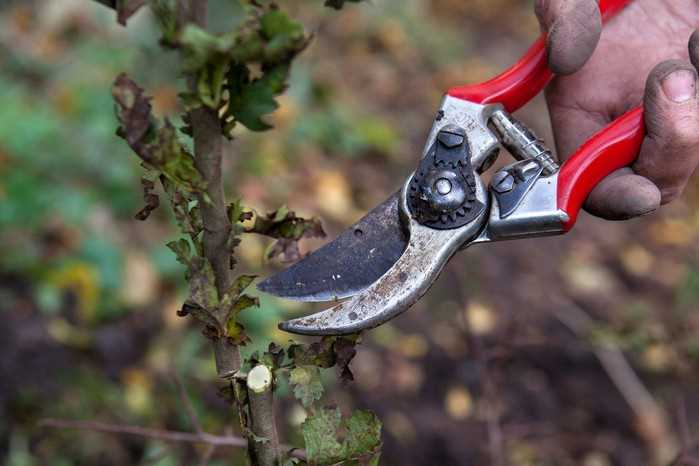
Even though autumn typically brings more rain, it is important to ensure that your pruned ornamental shrubs receive adequate water. If rainfall is insufficient, water them thoroughly once a week to keep the roots hydrated.
4. Consider fertilizing:
Depending on the specific needs of your ornamental shrubs, you may consider fertilizing them in autumn. Consult with a local garden center or horticulturist to determine the appropriate fertilizer and application method for your shrubs.
5. Monitor for pests and diseases:
Autumn is a crucial time to monitor your pruned ornamental shrubs for any signs of pests or diseases. Look for symptoms such as discoloration, wilting, or unusual growth patterns. If you notice any issues, consult with a professional to address the problem promptly.
6. Prune selectively, if necessary:
If you notice any overgrown or damaged branches during the autumn months, you can perform selective pruning. However, avoid extensive pruning in autumn, as it may stimulate new growth that can be damaged by frost.
7. Protect the shrubs from extreme weather:
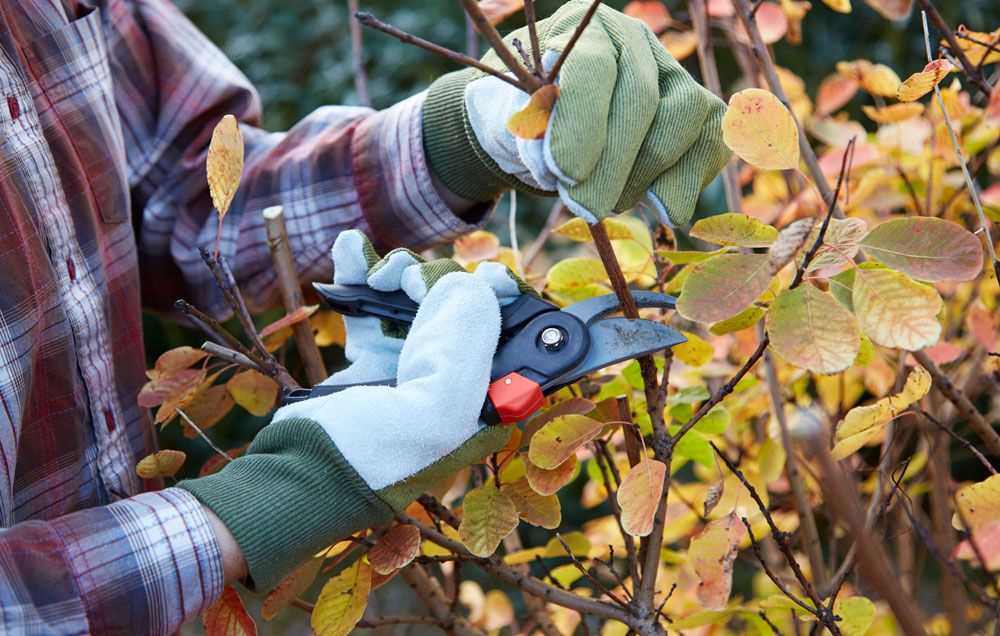
In areas with harsh winter conditions, consider protecting your pruned ornamental shrubs from frost or heavy snow. Use burlap or other protective coverings to shield the shrubs from potential damage.
By following these tips and techniques, you can ensure that your pruned ornamental shrubs will remain healthy and beautiful throughout the autumn and winter seasons.
Common Mistakes to Avoid During Autumn Pruning of Ornamental Shrubs
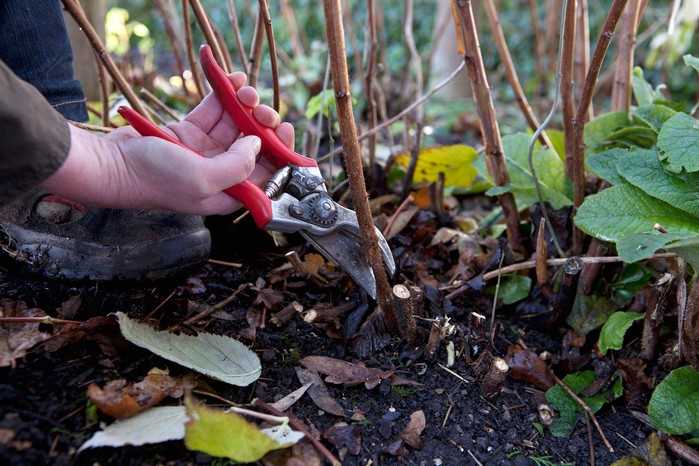
Pruning is an essential task to maintain the health and appearance of ornamental shrubs, but it must be done correctly to avoid causing harm. Here are some common mistakes to avoid during autumn pruning:
- Pruning too late in the season: It’s important to prune your ornamental shrubs before the first frost hits, as pruning too late can leave the plants vulnerable to cold weather damage.
- Over-pruning: Avoid excessive pruning, as this can weaken the shrub and hinder its growth in the following season. Only remove dead, damaged, or diseased branches and maintain the natural form of the shrub.
- Pruning during the wrong time of day: Prune your shrubs during the cooler part of the day, preferably in the morning or late afternoon. Pruning during the hottest part of the day can stress the plant and increase the risk of dehydration.
- Using dull or dirty tools: Always use sharp and clean pruning tools to make clean cuts. Dull tools can damage the branches and make it harder for the plant to heal properly, while dirty tools can carry disease-causing pathogens from one plant to another.
- Incorrect pruning cuts: Make sure to use the correct pruning cuts to avoid damaging the shrub. Avoid leaving stubs, as they can become entry points for diseases. Cut just above a bud or lateral branch to promote new growth.
- Pruning too much at once: Avoid pruning more than one-third of the shrub’s total growth at once. Prune in stages over a few seasons if necessary to avoid stressing the plant.
- Ignoring safety precautions: Always wear protective gloves and eyewear when pruning to protect yourself from potential injuries. Also, be cautious of electrical wires or other hazards when working near the shrubs.
By avoiding these common mistakes, you can ensure that your autumn pruning of ornamental shrubs promotes their health, aesthetics, and overall vitality.
Questions and Answers:
When is the best time to prune ornamental shrubs in autumn?
The best time to prune ornamental shrubs in autumn is after they have finished flowering and before the first frost.
What are the benefits of pruning ornamental shrubs in autumn?
Pruning ornamental shrubs in autumn helps to promote healthy growth, remove dead or diseased branches, and shape the shrub for aesthetic purposes.
Can I prune my ornamental shrubs in late autumn?
It is not recommended to prune ornamental shrubs in late autumn as it can stimulate new growth that may not have enough time to harden off before winter.
How much should I prune my ornamental shrubs?
The amount of pruning required depends on the type of shrub and its growth habit. Generally, it is advisable to remove no more than one-third of the shrub’s overall growth.
What tools do I need for pruning ornamental shrubs in autumn?
Some of the tools you may need for pruning ornamental shrubs in autumn include hand pruners, loppers, pruning saw, and gloves for protection.
Can I prune flowering shrubs in autumn?
It is generally not recommended to prune flowering shrubs in autumn as it can remove the buds that will bloom in the following spring. It is better to prune them after they have finished flowering.
Should I fertilize my shrubs after pruning them in autumn?
It is a good idea to fertilize shrubs after pruning them in autumn to provide them with the necessary nutrients for healthy regrowth. Use a balanced fertilizer and follow the instructions on the package.







